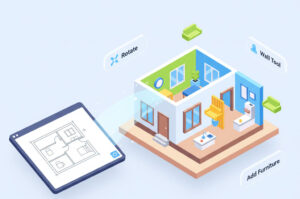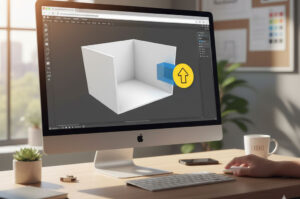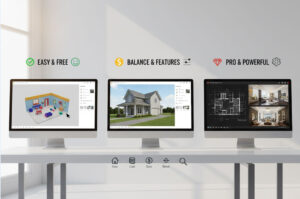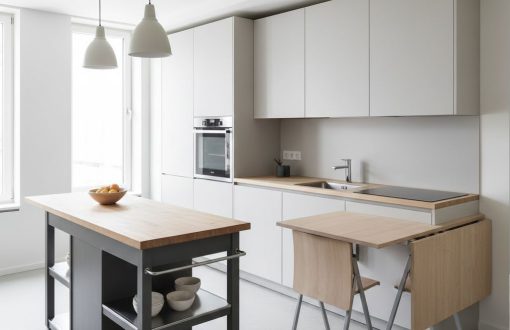The Ultimate Guide to 3D Home Design

The Ultimate Guide to 3D Home Design: Free and Paid Tools to Plan Your Dream Space
Have you ever tried to describe exactly how you want your living room to look to someone else? Maybe you’ve held up a tiny sample of paint or pointed vaguely at a Pinterest board? It’s tough! That’s why the world of 3D Home Design has become so incredibly popular. It’s like stepping into a time machine that lets you walk through your future house before the first nail is even hammered.
To understand how 3D design is transforming home planning, you can read What Is 3D Home Design and Why It’s a Game-Changer for Modern House Plans.
Using 3D Home Design software is no longer just for professional architects. Today, anyone can jump in and start playing around with layouts, colors, and furniture. This article is your friendly roadmap, guiding you through the best free options for dipping your toes in and the powerful paid tools for taking your vision to a professional level. Let’s start designing!
Why You Need a 3D Home Design Tool Before You Start Building
 Thinking about a home renovation or building a brand-new house is thrilling, but it can also be terrifying. You’re committing huge amounts of time and money, and once the walls are up, making changes is expensive and messy. This is where your 3D Home Design software becomes your most valuable partner, acting as a low-cost, digital safety net.
Thinking about a home renovation or building a brand-new house is thrilling, but it can also be terrifying. You’re committing huge amounts of time and money, and once the walls are up, making changes is expensive and messy. This is where your 3D Home Design software becomes your most valuable partner, acting as a low-cost, digital safety net.
For more on how 3D design helps prevent costly mistakes, see How to Use 3D Home Design to Save Money on Renovations.
Imagine trying to build a complex LEGO castle just by reading a black-and-white description of the blocks. You’d make a ton of mistakes! That’s why architects use blueprints, and you should use a 3D model. These tools let you see everything from wall placement to sunlight patterns. For instance, you can check if that large sectional sofa you’ve been eyeing actually fits into your den without blocking the walkway, or if the kitchen island you planned leaves enough space for two people to pass comfortably. It brings abstract measurements to life, turning inches into tangible space.
Another crucial reason is avoiding expensive “do-overs.” It’s incredibly common for homeowners to realize a crucial detail was wrong only after construction is underway—like discovering that the laundry chute opens up directly into the guest bedroom closet. When you plan your 3D Home Design digitally, moving a wall or swapping out a window is just a few clicks. It might take five minutes in the software, but that same change in real life could cost thousands of dollars and weeks of delay. Think of the 3D process as cheap insurance against real-world renovation regrets.
Finally, 3D designs are the best way to communicate with contractors, interior designers, and even your spouse! A flat 2D floor plan requires training to read, but a photorealistic 3D render is universally understandable. Instead of trying to explain, “I want the cabinets to be that dark blue color, but more gray, like the sea on a stormy day,” you can simply show them the 3D image. Everyone sees the same vision, which drastically reduces misunderstandings and ensures the final result matches the picture in your head.
Fantastic Free Tools for Your First 3D Home Design Project
 If you’re a beginner and want to explore 3D Home Design without pulling out your credit card, these free options are the perfect starting line. They offer robust features and are designed to be easy for anyone to pick up and start designing.
If you’re a beginner and want to explore 3D Home Design without pulling out your credit card, these free options are the perfect starting line. They offer robust features and are designed to be easy for anyone to pick up and start designing.
For more software comparisons, see 10 Simple Best Free and Paid House or Room Design Software.
SketchUp Free (The Easiest Way to Build a Box)
 SketchUp Free, which runs right in your web browser, is fantastic because it’s known for its incredibly straightforward ‘Push/Pull’ tool. You start by drawing a flat, 2D shape (like a rectangle for a room), and then you literally “pull” it up into a 3D object. It’s an intuitive way to teach yourself the basics of three-dimensional modeling.
SketchUp Free, which runs right in your web browser, is fantastic because it’s known for its incredibly straightforward ‘Push/Pull’ tool. You start by drawing a flat, 2D shape (like a rectangle for a room), and then you literally “pull” it up into a 3D object. It’s an intuitive way to teach yourself the basics of three-dimensional modeling.
This program is perfect for users who primarily need to visualize space and volume. Let’s say you’re designing a new, built-in bookshelf. You can model the exact width and depth of the wall, then push and pull the interior shelves to their precise height. It might not generate a super-realistic final picture, but for getting the scale and dimension right—the core of good 3D Home Design—it’s excellent.
The best part about SketchUp is its enormous library of user-created models called the 3D Warehouse. Need a specific model of a dishwasher or a unique office chair? Chances are, someone has already uploaded it. This means you don’t have to draw every single item yourself; you can just drop pre-made furniture, appliances, and fixtures into your design to see how they look and fit immediately.
Floorplanner (The Quick 2D-to-3D Jumper)
Floorplanner is another top-tier free tool, especially if you prefer starting your design from a traditional overhead view. It’s often easier for beginners because it feels like drawing a floor plan with smart tools—you click to place a wall, and it calculates the dimensions for you.
What makes Floorplanner great is how quickly it transitions from the flat, 2D plan to the immersive 3D view. Once you’ve laid out your floor plan, you just hit a button and instantly see your room pop up in three dimensions. You can then “walk” through your digital house, change the wallpaper, lay down hardwood floors, and try out different lighting fixtures, all without confusion.
While the free version limits the number of projects you can save, it provides a comprehensive library of furniture, colors, and textures that you can drag and drop. If you want to see if a blue wall works better than a green one, you can switch it instantly. This drag-and-drop feature makes it less about complex geometry and more about simple interior decorating, making it ideal for pure 3D Home Design and décor visualization.
Planner 5D (The Interior Design Powerhouse)
Planner 5D is designed specifically for interior design and excels at speed and visual realism. The interface is highly visual, allowing you to select items from extensive catalogs and simply drop them into your rooms. It’s arguably the fastest way to go from a blank canvas to a fully furnished 3D space.
The free features are generous and focus heavily on aesthetics. You can change everything from the texture of the roof tiles to the grain of the wood on the dining table. This level of detail helps a beginner immediately grasp the concept of material choices in 3D Home Design. For example, you can compare how a reflective polished stone countertop looks versus a matte butcher block in the same kitchen model.
The value here is in its simplicity and the ability to test out different styles quickly. If you’re not worried about designing complex structural elements like multi-story cantilevered roofs, but are intensely focused on how the final colors, materials, and furniture placement harmonize, Planner 5D is an excellent, zero-cost choice to begin your planning journey.
Leveling Up: Paid Software for Serious 3D Home Design
 When your project gets more serious—maybe you are designing a full addition, a multi-story home, or you need professional blueprints—you will likely need a paid tool. These options offer greater precision, specialized architectural features, and the ability to produce construction-ready documentation from your 3D Home Design.
When your project gets more serious—maybe you are designing a full addition, a multi-story home, or you need professional blueprints—you will likely need a paid tool. These options offer greater precision, specialized architectural features, and the ability to produce construction-ready documentation from your 3D Home Design.
For design inspiration, you can check Top 10 Modern House Plans.
Chief Architect/Home Designer Suite (The Homeowner’s Pro Tool)
Chief Architect is the gold standard for professionals, but its little brother, the Home Designer Suite, is perfect for serious homeowners. This software takes the ease of 3D modeling and couples it with professional-grade construction tools.
The biggest benefit of this tool is its attention to building details. Unlike simple free programs, Home Designer Suite can automatically generate roofs, foundations, and framing based on your 2D wall layout. You can adjust complex elements like trusses, ceiling heights, and even plumbing layouts. This means your 3D Home Design model is not just pretty to look at; it’s structurally sound and ready for a builder to review.
This level of detail is critical for complex renovations. If you’re adding a second floor or modifying the roofline, this software ensures that every change you make visually in the 3D model is backed up by accurate measurements and building specifications. It bridges the gap between a fun visual project and a serious construction plan.
AutoCAD (The Industry Benchmark)
AutoCAD is the legendary tool used globally by architects and engineers. It’s not just for 3D Home Design; it’s a complete drafting and design powerhouse. While it has the steepest learning curve on this list, it delivers unparalleled precision and professional output.
Because AutoCAD is so precise, it’s used for every type of technical drawing, from intricate electrical plans to detailed elevation views. If your project is highly customized and requires exact specifications down to the millimeter—perhaps integrating bespoke furniture or complex glasswork—AutoCAD ensures that the 3D model is mathematically perfect.
The main reason to pay for this tool is if you are collaborating with a professional who specifically demands files in the industry-standard DWG format. Your architect will be able to take your detailed 3D Home Design files and immediately incorporate them into their professional workflow, saving them time and reducing the risk of data translation errors.
Choosing the Right Tool for Your 3D Home Design Needs
 Deciding between free and paid software, or which specific tool to choose, depends entirely on your project’s goal. There are three key questions to ask yourself before you start downloading programs.
Deciding between free and paid software, or which specific tool to choose, depends entirely on your project’s goal. There are three key questions to ask yourself before you start downloading programs.
The first question is simple: Are you visualizing, or are you executing? If you are just moving furniture around, playing with colors, and deciding if you like open-concept living, the free tools are absolutely sufficient. They provide the visualization necessary for basic décor. However, if your design is moving into the realm of construction—meaning you need to hand a contractor precise plans for moving electrical outlets, pouring concrete, or building a load-bearing wall—you must transition to a paid, professional-level software to ensure safety and accuracy.
Next, you need to consider the Learning Curve vs. Result Quality. A free, browser-based app will get you results in minutes, but the final 3D picture might look a bit like a video game from a few years ago. A powerful paid program requires hours or days to learn, but it can produce photorealistic images that are almost impossible to distinguish from a real photograph. For pure beginners, start with the easy-to-use free tools, and only upgrade when you find that the software is limiting your vision.
Finally, think about Collaboration and File Sharing. If you are the only person who will look at the file, any program works. But if you plan to share your 3D Home Design with a builder or a designer, check which file formats they accept. Using a standard tool ensures that your project data can be easily transferred. While free tools often export basic images, professional tools export detailed, layered architectural drawings, which is a key difference that justifies the price.
Conclusion
Creating your own 3D Home Design is the single best step you can take toward a successful, regret-free home project. Whether you choose a simple free tool to rearrange your digital furniture or a powerful paid program to draw up construction blueprints, the time you invest now will save you a world of trouble (and money) later. Happy designing!




